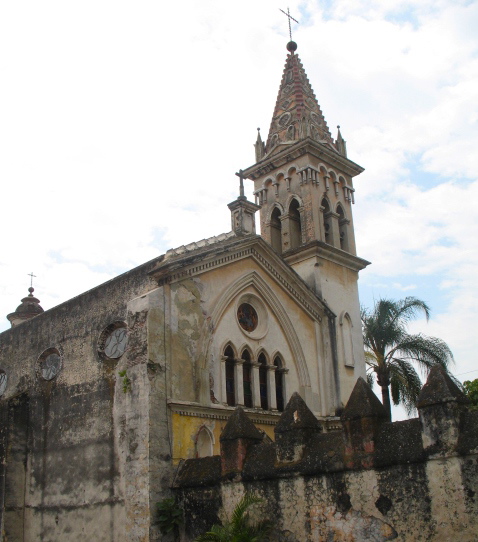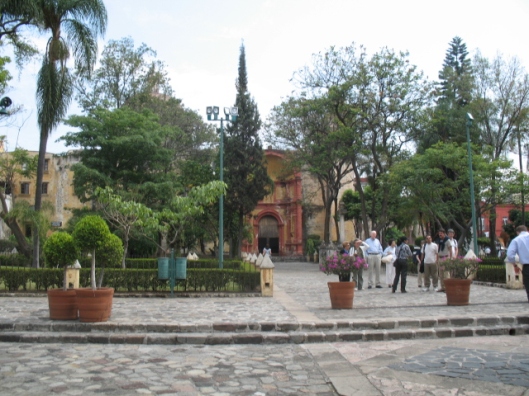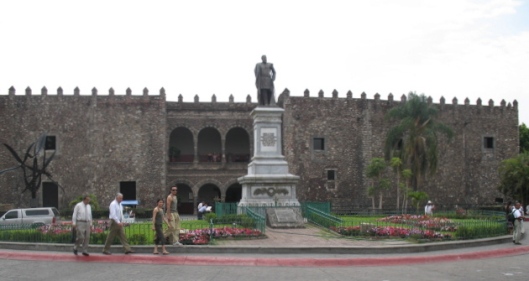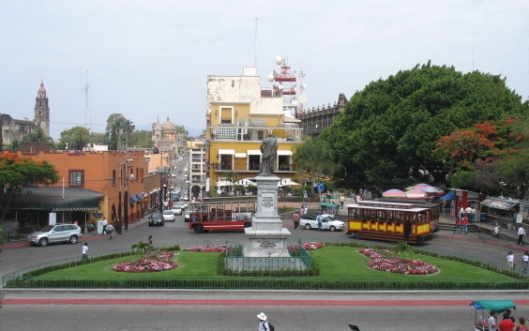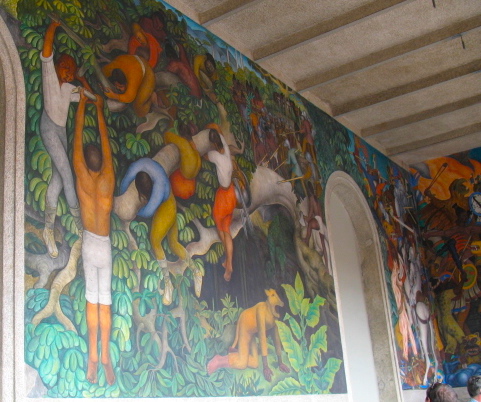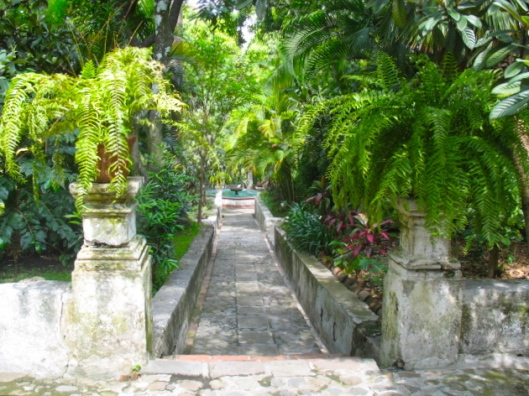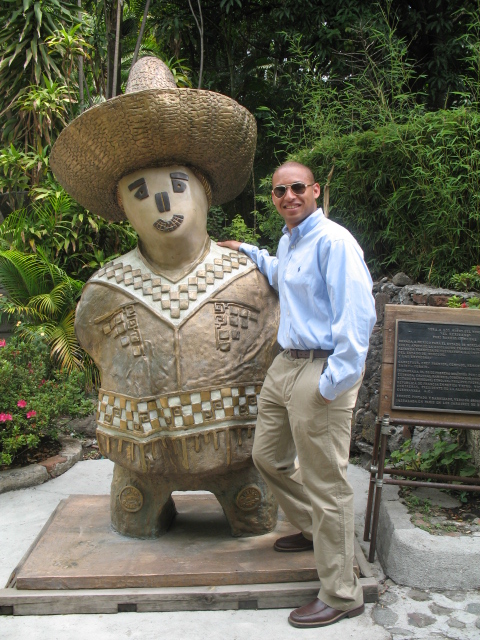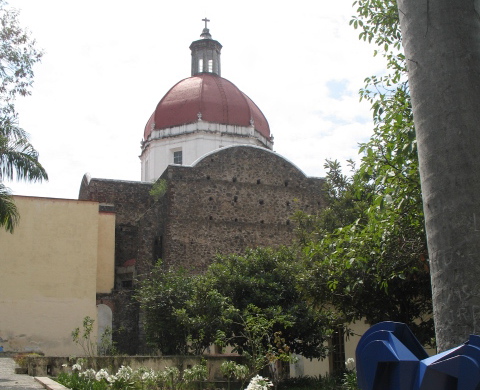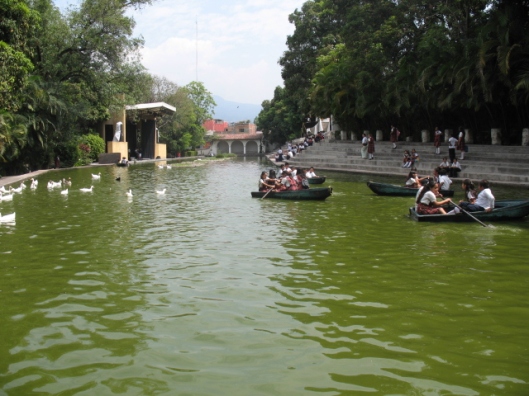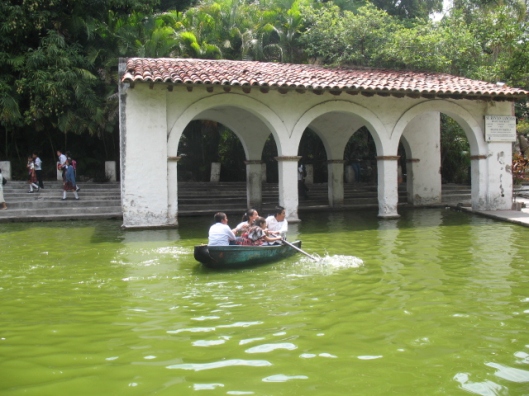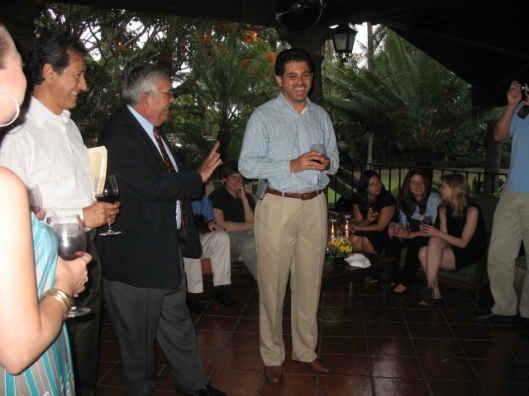Thursday, May 24: This morning we attend a lecture by Tom Morgan, Director of Phillips Insurance, on Working Successfully in Mexico. Then we head to Cuernavaca for a tour.
Cuernavaca is the capital and largest city of the Mexican state of Morelos. The city is only 45 minutes from Mexico City by the way of the Mexico – Acapulco expressway. It was established at the archeological site of Gualupita I by the Olmec, “the mother culture” of Mesoamerica, approximately 3200 years ago. Today it’s known as “The City of Eternal Spring” due to its abundant vegetation and its temperate climate with an annual average of 20° C.
Because of its proximity to Mexico City, Cuernavaca traditionally has been a center of Mexican society, with many of the country’s wealthy citizens owning sprawling mansions and haciendas in the city. It is also known as “the Beverly Hills of Mexico” because from any elevation, one can see that many homes have swimming pools. Cuernavaca is also host to a large foreign resident population, including students who come to study the Spanish language (Wikipedia: Cuernavaca).
The ancient name of Cuernavaca is “Cuauhnahuac” in Nahuatl which means “surrounded by or close to trees”. It was founded seven centuries ago almost a mile high in the Sierra Madre Mountains.
Cuernavaca is a modern tropical city that hosts a score of scientific research institutes, an industrial park with over one hundred industries, seventeen universities and extensions of the National University in Mexico City, and a global assortment of retired diplomats, business executives and government officials. This casual city also attracts people who seek a sunny place for creative or intellectual inquiry where they can find cultural stimulation and spirited conversations (Tour by Mexico: Cuernavaca).
Our first stop on the tour is Cuernavaca’s Cathedral, or former monastery of the Assumption. This church is the oldest building in the entire monastery complex, consisting of four buildings. The monastery was the fifth Franciscan construction established in Mexico in 1525 by the first twelve Franciscan friars who arrived in the country. It was here where the monks began their work of evangelization in the state. (Visit Mexico: Cathedral of Cuernavaca)
The Cathedral of the Assumption of Mary of Cuernavaca is the Roman Catholic Cathedral church of the Diocese of Cuernavaca. The church and its surrounding monastery is one of the early 16th century monasteries built near the Popocatepetl volcano; it was initially established to convert the indigenous people after the Spanish conquest of the Aztec Empire. By the 18th century, the church of the monastery began to function as the parish church of the city and in the late 19th century, it was elevated to the rank of a cathedral. (Wikipedia: Cuernavaca Cathedral)
After visiting the square and the cathedral, we meet in front of Palacio de Cortez. The palacio with its 16 halls is the former residence of conquistador Hernán Cortés. Construction started in 1530 on the site of a Tlahuica Indian ceremonial center and was finished by the conquistador’s son. The palace later served as the legislative headquarters for the state of Morelos. In 1974 the palace was inaugurated as a regional museum documenting the history of the Cuernavaca area. Among items of interest are pre-Hispanic and colonial pieces, and famous murals by Diego Rivera painted in 1929 and 1930 commissioned by the then U.S. ambassador Dwight Morrow, father-in-law of the transatlantic flyer Charles Lindbergh. They depict scenes from the Conquest, the history of Cuernavaca, the War of Independence and the Mexican Revolution. The image of Emiliano Zapata leading Hernán Cortés’ white horse symbolizes the people’s re-appropriation of the land (Cuernavacainfo.com: Cortes Palace and Cuauhnahuac Regional Museum).
The Borda Garden was originally a large mansion owned by the Borda family in Cuernavaca. This is where José de la Borda died in 1778. Borda was a French/Spaniard who migrated to New Spain in the 18th century, amassing a great fortune in mines in Taxco and Zacatecas in Mexico. At one point, he was the richest man in Mexico.
Later, Borda’s son, Manuel, transformed the grounds of the house into gardens filled with flowers and fruit trees to satisfy his passion for botany. These gardens also contain a number of fountains and an artificial lake and were completed in 1783. In 1865, this was the summer home of Emperor Maximilian I and his wife Carlota Amalia. Today the area is a public park where the gardens have been maintained, and the house itself has been converted into a museum (Wikipedia: José de la Borda).
After having lunch, we attend another lecture on Entrepreneurship and the Law in Mexico: Legal implications involved in setting up businesses by State Controller and Notary Patricia Mariscal.
After taking some free time to relax, we attend another lecture in the early evening on Cultural Foundations of Mexican Business: How to maximize your success, by Betty Ramos, a cross cultural business specialist and President of the Geo-Cultural Group.
Finally, we head to a reception at Hotel las Mañanitas with local businessmen hosted by Jorge Morales Barud, former Governor and currently Secretary of Agriculture in Morelos.




